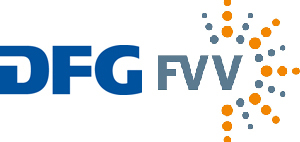SCHU 729/25-2, FVV-Nr. 1195

| Period: | 2015-07-01 to 2018-03-31 |
|---|---|
| Partner: | TU Darmstadt, Forschungszentrum Jülich |
| Funder: | German Research Foundation (DFG), Research Association for Combustion Engines (FVV) |
| Project Manager: | Dr. Mario Rudolphi |
| Research Group: | High Temperature Materials |
Ceramic bi-layer thermal barrier coatings with a top layer of Gadoliniumzirconate (GZO) and a bottom layer of partially yttria stabilized zirconia (YSZ) allow a significant increase of surface temperature in comparison with conventional monolayer coatings, thus achieving a higher energy efficiency. In the first project period the following main objectives were pursued: (i) establishing a reliable production route for GZO coatings, (ii) determination of the basic physical properties, (iii) identification of the relevant damage mechanisms, (iv) characterization of the damage evolution and mechanical properties acting as input parameter for lifetime modelling as well as (v) development of a life time model.
Following a systematic parametric study, stoichiometric coatings with a tailored microstructure were produced which showed a significant increase in thermo cyclic performance in comparison with standard YSZ coatings. Nevertheless the coating properties are highly dependent on the initial and process conditions. Consequently, one main objective of the follow-up project is to develop a process tool to produce reliable coatings with properties in a specific property range. Moreover, the influence of thermal gradient loading conditions and the influence of constraint sintering on coating properties will be investigated in detail. Especially the development of residual stress state is one main issue which can have a significant influence on damage evolution and lifetime.
With the knowledge of the relevant damage mechanisms the lifetime model was modified and successfully adapted to the bi-layer. The developed lifetime model enables a prediction of the critical strain to failure and a lifetime assessment by comparing the critical strain with component loading cycles. However, up to now, the influence of complex geometric boundary conditions, which can significantly affect the stress distribution in the layer system and the damage evolution, on lifetime is not considered in the lifetime model. Consequently, in the second project period, cylindrical specimens with varied diameter and more complex specimens with concave and convex shape will be studied. Using this kind of specimens, the influence of geometric boundary conditions on layer properties and lifetime can be investigated systematically. Moreover a statistical sensitivity analysis of input parameters on critical strain and lifetime will be performed, to quantify the influence of the scattering of coating properties. On the basis of the results the lifetime model will be extended with a geometry factor. The critical strain, acting as a macroscopic damage parameter, is then a function of loading and geometric boundary conditions. Finally, the determined mechanical stability limits of the coating system will be integrated in a finite element model to enable a prediction of the failure location as well as the time to failure of the coating system.
back
Funded by the Deutsche Forschungsgemeinschaft (DFG, German Research Foundation) - SCHU 729/25-2 and by the Research Association Internal Combustion Engines (FVV) - 1195
Dr. Mario Rudolphi
Tel.: +49 69 / 7564-492
E-mail: mario.rudolphi
Final Report (pdf, 1.5 MB, in German)